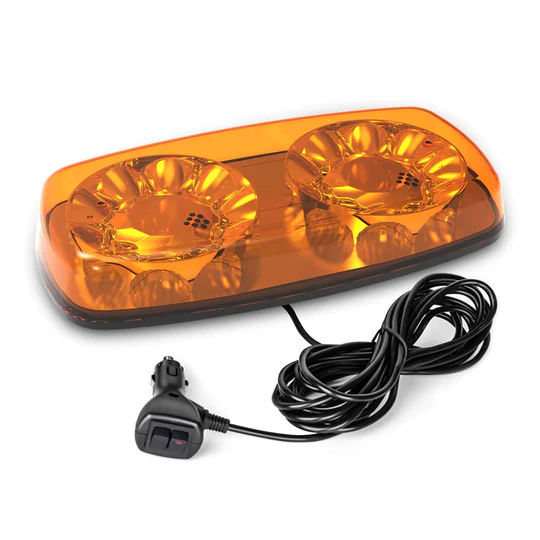In the realm of safety and emergency response, the significance of effective warning systems cannot be overstated. Among various signaling devices, amber strobe lights stand out as a versatile tool utilized across a spectrum of industries and applications. From enhancing visibility in hazardous environments to alerting motorists of potential dangers, these flashing lights play a crucial role in safeguarding lives and property. In this comprehensive guide, we delve into the intricacies of amber strobe lights, exploring their functionality, applications, and impact on safety measures.
Amber strobe lights are characterized by their intense, rapid flashes of amber-colored light. They are designed to attract attention and signal potential hazards or emergencies. Unlike continuous lighting, strobe lights produce intermittent flashes, making them highly noticeable even in adverse weather conditions or areas with poor visibility.
Amber strobe lights typically consist of several key components, including a light source, a power supply, and a control mechanism. The light source, often an array of high-intensity LEDs or xenon bulbs, emits bursts of light at regular intervals. The power supply provides the necessary electrical energy to drive the light source, while the control mechanism regulates the timing and frequency of the flashes.

One of the primary applications of amber strobe lightsis in road safety. They are commonly mounted on emergency vehicles, construction equipment, and tow trucks to alert motorists and pedestrians of their presence. The flashing amber light helps reduce the risk of accidents by improving visibility, especially in low-light conditions or high-traffic areas.
In industrial environments, amber strobe lights serve as warning signals in areas where there is a heightened risk of accidents or hazards. They are often installed on machinery, conveyor systems, and confined spaces to indicate when equipment is in operation or when entry is restricted. By providing visual cues, these lights help mitigate workplace accidents and ensure compliance with safety regulations.
On watercraft and marine vessels, amber strobe lights play a critical role in maritime navigation. They are used to mark buoys, docks, and other navigational aids, helping ships and boats navigate safely through waterways, particularly during periods of reduced visibility or inclement weather.
In the agricultural sector, amber strobe lights are commonly fitted on tractors, harvesters, and other farm machinery. These lights serve as a warning to other vehicles on the road, alerting them to the slow-moving nature of agricultural equipment and reducing the risk of rear-end collisions.
Within the aviation industry, amber strobe lights are installed on aircraft to enhance visibility during taxiing, takeoff, and landing. They help ground personnel and other pilots identify the presence of an aircraft on the runway or taxiway, reducing the likelihood of runway incursions and collisions.

The widespread adoption of amber strobe lights has had a significant impact on safety measures across various sectors. By providing a highly visible warning signal, these lights help mitigate the risk of accidents, minimize response times during emergencies, and improve overall situational awareness. Moreover, their versatility and durability make them an indispensable tool for organizations seeking to enhance their safety protocols and compliance standards.
In many jurisdictions, the use of amber strobe lights is subject to regulatory oversight to ensure their safe and appropriate deployment. Government agencies and industry standards organizations establish guidelines regarding the permissible intensity, frequency, and placement of these lights to maximize their effectiveness without causing undue distraction or confusion. Compliance with these regulations is essential for organizations and individuals utilizing amber strobe lights to maintain safety and avoid potential legal liabilities.
As technology continues to advance, we can expect ongoing innovations in the design and functionality of amber strobe lights. Advancements in LED technology, wireless connectivity, and energy efficiency are likely to drive the development of more compact, durable, and environmentally friendly strobe light systems. Additionally, integration with advanced sensor networks and artificial intelligence may enable predictive maintenance capabilities, further enhancing the reliability and performance of these critical safety devices.
Amber strobe lights represent a cornerstone of modern safety and emergency response systems, serving as a visual beacon of caution and awareness across a diverse range of industries and applications. From roads and construction sites to maritime environments and agricultural fields, these flashing lights play a vital role in safeguarding lives, minimizing risks, and promoting situational awareness. As technology evolves and safety standards evolve, AgriEyes' amber strobe lights will continue to adapt and innovate, ensuring their enduring relevance in an ever-changing world of safety and security.